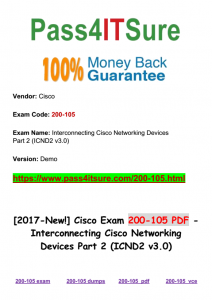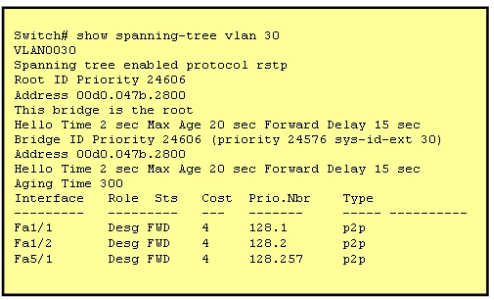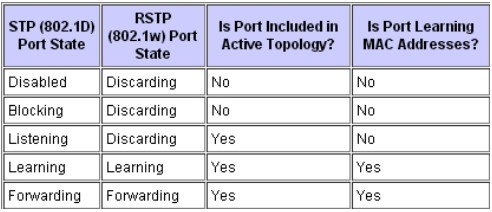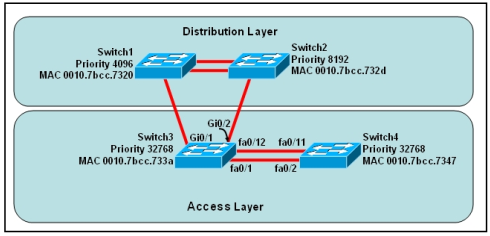Can I prepare for the Cisco 200-105 dumps using the study guide? “Interconnecting Cisco Networking Devices Part 2 (ICND2 v3.0)” is the name of Cisco 200-105 exam dumps which covers all the knowledge points of the real Cisco exam. Pass4itsure 200-105 dumps exam questions answers are updated (204 Q&As) are verified by experts. The Interconnecting Cisco Networking Devices Part 2 (200-105 ICND2) exam is a 90-minute, 204 question assessment that is associated with the associated with the CCNA Routing and Switching certification. Best Cisco https://www.pass4itsure.com/200-105.html ICND2 dumps free Youtube study guide online are the best materials
Exam Code: 200-105
Exam Name: Interconnecting Cisco Networking Devices Part 2 (ICND2 v3.0)
Updated: Sep 02, 2017
Q&As: 204
[Latest Cisco 200-105 Dumps Certification Vce From Google Drive]: https://drive.google.com/open?id=0BwxjZr-ZDwwWWWw0QXQxY3R1X1E
[Latest Cisco 300-160 Dumps Certification Vce From Google Drive]: https://drive.google.com/open?id=0BwxjZr-ZDwwWSWJ6ZzZZU3FRTlk

Pass4itsure Cisco 200-105 Dumps Training Program Online Here:
Refer to the exhibit.
Question No : 1 – (Topic 1)

The output that is shown is generated at a switch. Which three statements are true?
(Choose three.)
A. All ports will be in a state of discarding, learning, or forwarding.
B. Thirty VLANs have been configured on this switch.
C. The bridge priority is lower than the default value for spanning tree.
D. All interfaces that are shown are on shared media.
E. All designated ports are in a forwarding state.
F. This switch must be the root bridge for all VLANs on this switch.
200-105 exam Answer: A,C,E
Explanation:
From the output, we see that all ports are in Designated role (forwarding state) -> A and E
are correct.
The command “show spanning-tree vlan 30 only shows us information about VLAN 30. We
don’t know how many VLAN exists in this switch -> B is not correct.
The bridge priority of this switch is 24606 which is lower than the default value bridge
priority 32768 -> C is correct.
All three interfaces on this switch have the connection type “p2p”, which means Point-to
point environment – not a shared media -> D is not correct.
The only thing we can specify is this switch is the root bridge for VLAN 3o but we can not
guarantee it is also the root bridge for other VLANs -> F is not correct.
Question No : 2 – (Topic 1) Which port state is introduced by Rapid-PVST?
A. learning
B. listening
C. discarding
D. forwarding
Answer: C
Explanation:
Spanning Tree from PVST+ to Rapid-PVST Migration Configuration Example
Reference 1:
PVST+ is based on IEEE802.1D Spanning Tree Protocol (STP). But PVST+ has only 3 port
states (discarding, learning and forwarding) while STP has 5 port states (blocking, listening,
learning, forwarding and disabled). So discarding is a new port state in PVST+.

Background Information
802.1D Spanning Tree Protocol (STP) has a drawback of slow convergence. Cisco
Catalyst switches support three types of STPs, which are PVST+, rapid-PVST+ and MST.
PVST+ is based on IEEE802.1D standard and includes Cisco proprietary extensions such
as BackboneFast, UplinkFast, and PortFast. Rapid-PVST+ is based on IEEE 802.1w
standard and has a faster convergence than 802.1D. RSTP (IEEE 802.1w) natively
includes most of the Cisco proprietary enhancements to the 802.1D Spanning Tree, such
as BackboneFast and UplinkFast. Rapid-PVST+ has these unique features:
Uses Bridge Protocol Data Unit (BPDU) version 2 which is backward compatible with the
802.1D STP, which uses BPDU version 0.
All the switches generate BPDUs and send out on all the ports every 2 seconds, whereas
in 802.1D STP only the root bridge sends the configuration BPDUs.
Port Roles—Root port, designated port, alternate port and backup port.
Port States—Discarding, Learning, and Forwarding.
Port Types—Edge Port (PortFast), Point-to-Point and Shared port.
Rapid-PVST uses RSTP to provide faster convergence. When any RSTP port receives
legacy 802.1D BPDU, it falls back to legacy STP and the inherent fast convergence
benefits of 802.1w are lost when it interacts with legacy bridges.
Refer to the exhibit.
Question No : 3 – (Topic 1)

At the end of an RSTP election process, which access layer switch port will assume the
discarding role?
A. Switch3, port fa0/1
B. Switch3, port fa0/12
C. Switch4, port fa0/11
D. Switch4, port fa0/2
E. Switch3, port Gi0/1
F. Switch3, port Gi0/2
Answer: C
Explanation:
In this question, we only care about the Access Layer switches (Switch3 & 4). Switch 3 has
a lower bridge ID than Switch 4 (because the MAC of Switch3 is smaller than that of
Switch4) so both ports of Switch3 will be in forwarding state. The alternative port will surely
belong to Switch4.
Switch4 will need to block one of its ports to avoid a bridging loop between the two
switches. But how does Switch4 select its blocked port? Well, the answer is based on the
BPDUs it receives from Switch3. A BPDU is superior than another if it has:
1. A lower Root Bridge ID2. A lower path cost to the Root3. A lower Sending Bridge ID4. A
lower Sending Port ID
These four parameters are examined in order. In this specific case, all the BPDUs sent by
Switch3 have the same Root Bridge ID, the same path cost to the Root and the same
Sending Bridge ID. The only parameter left to select the best one is the Sending Port ID
(Port ID = port priority + port index). In this case the port priorities are equal because they
use the default value, so Switch4 will compare port index values, which are unique to each
port on the switch, and because Fa0/12 is inferior to Fa0/1, Switch4 will select the port
connected with Fa0/1 (of Switch3) as its root port and block the other port -> Port fa0/11 of
Switch4 will be blocked (discarding role)
Question No : 4 – (Topic 1)
At which layer of the OSI model is RSTP used to prevent loops?
A. physical
B. data link
C. network
D. transport
200-105 dumps Answer: B
Explanation: RSTP and STP operate on switches and are based on the exchange of
Bridge Protocol Data Units (BPDUs) between switches. One of the most important fields in
BPDUs is the Bridge Priority in which the MAC address is used to elect the Root Bridge ,
RSTP operates at Layer 2.
Question No : 5. Which of the following would be the fastest device for accessing data?
A. A floppy disk
B. A zip disk
C. A hard disk
D. A magnetic tape drive.
Answer: C
Question No : 6. Which of the following is hardware?
A. A database
B. A spreadsheet.
C. A mouse
D. An operating system
200-105 pdf Answer: C
Question No : 7. Which of the following is a peripheral device?
A. Arithmetic logic unit
B. Control unit
C. Immediate access store
D. Backing tape store.
Answer: D
Question No : 8. The generic name of the devices, which are connected to, and controlled by, the central processing
unit, is:
A. Keyboards
B. Ram
C. Monitors
D. Peripherals
200-105 vce Answer: D
Question No : 9. Which of the following printers is the most suitable for a secretary to produce the final copy of a
document?
A. Dot matrix
B. Laser
C. Plotter
D. Any of them
Answer: B
Question No : 10. Which type of memory is used to store the current status of computer application whilst it is being
processed?
A. EPROM
B. PROM
C. ROM D. RAM
Answer: D
Question No : 11. Which of the following is an input device?
A. A monitor
B. A scanner
C. A plotter
D. Speakers
200-105 exam Answer: B
Question No : 12. Small businesses often use computer systm to run the company. Typically it is most likely to be:
A. A Mainframe computer
B. A microprocessor
C. A mini computer
D. A personal computer
Answer: D
Question No : 13. Which of the following could be considered typical users of a mainframe computer?
A. A bank
B. A school
C. A doctor’s surgery
D. A small business
200-105 dumps Answer:A
Question No : 14. Which list shows the correct order of memory capacity for these computers, smallest first?
A. Mainframe computer, personal computer and minicomputer
B. Personal computer, minicomputer and mainframe computer.
C. Personal computer, mainframe computer and minicomputer
D. Mainframe computer, minicomputer and personal computer.
Answer: B
Question No : 15. What is the name of the terminal, with limited processing capabilities, which is usually connected to a
mainframe computer?
A. A dumb terminal
B. An intelligent terminal
C. A terminal adapter
D. A terminal node.
200-105 pdf Answer:A
This Cisco 200-105 exam tests a candidates knowledge and skills related to LAN switching technologies, IPv4 and IPv6 routing technologies, WAN technologies, infrastructure services, and infrastructure maintenance. Instant access to try 200-105 dumps free demo:https://www.pass4itsure.com/200-105.html